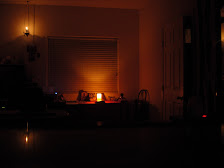By Peter Schworm
Globe Staff / January 21, 2008
The sacred Russian bells at Harvard University's Lowell House rang forth yesterday as they have most Sundays since Easter 1931, their deep, resonant rumble a haunting hymn to their improbable survival of the Stalinist era.
But high in the belfry on this Sunday, the Harvard students struck the 17 bronze bells with a newly forged skill and deeper understanding of the ancient art of bell-ringing. They were fresh from an 11-day training session with renowned Russian bell-ringers at the Danilovsky Monastery in Moscow, the bells' historic home and the residence of the patriarch of the Russian Orthodox Church.
Newly certified by Russian masters and versed in the lore of church bells, the ringers sounded the bells by nimbly manipulating an intricate series of ropes, pulleys, and pedals. Benjamin Rapoport, a Harvard Medical School student and a resident tutor at Lowell House, gently tugged at crisscrossed ropes like a puppeteer to strike a series of smaller bells in time with the ringing reverberations of the massive mother bells. Despite a bracing wind that whipped through the bell tower, he pulled the ropes and heavy wire cables with his bare hands.
"Good Russian weather," he said.
Rapoport and three other students took part in the intensive tutoring session in Moscow as part of a budding exchange program between Harvard and the monastery that was born out of the agreement to return the Harvard bells to their origin this summer.
In exchange, Harvard will receive replicas cast in a Russian foundry and blessed by the church patriarch.
The students spent up to 10 hours a day in classes immersed in both the theory and practice of Russian church bells, called "singing icons" in the Orthodox Church. In striking detail, expert bell-ringers at the mon astery and Kremlin explained the acoustics of different bells, and how their style and sound have evolved over the centuries. The students learned how bells are made, designed, and hung, and their role in church services.
Above all, students came to understand the vital religious and cultural importance of Russian church bells, which were silenced for decades under communism.
"Bell-ringing as an art was almost lost during the Soviet era," Rapoport said.
"They are very hopeful for a renaissance, and it's a special honor to be part of the history."
The classes were roughly divided between lectures, translated from Russian into English, and practice. The quartet was tutored in the unique Russian style and analyzed recordings of their Sunday performances at Harvard.
Some sessions were conducted at a "bell gym," with a small set of bells with dampers and warmer temperatures. Others were held during evening services at monasteries in frigid bell towers.
"All bells all the time," Rapoport quipped.
The tutors, while pleased to encounter disciples of their practice, were stern taskmasters. But they also praised the students, who have tolled the bells at Harvard for several years, for making marked improvement.
The students said they also won over an initially skeptical Russian media, which closely covered their visit in a generally favorable light.
Jeremy Lin, a Harvard senior who yesterday vigorously pulled a pair of ropes to send a string of chimes through the cold air, said ringing the bells in Russia was particularly meaningful.
"To try and understand the context is nearly impossible outside of Russia," Lin said.
"It was very moving to be part of a oral tradition, and to experience the bells as an integral part of a church service. That was the most enlightening part of the experience for me."
Elisa Olivieri, a Harvard senior, spoke with awe of hearing the pealing of the bells call worshipers to service.
"It's very solemn and mysterious, and the bells really amplify that," she said.
The project was funded by a foundation established by Viktor Vekselberg, a Russian oil and metals tycoon seeking to return lost artifacts to Russia. The bells, one of the few collections to survive Stalinist religious purges, were given to Harvard in 1930 by American industrialist Charles R. Crane to save them from likely destruction.
Students yesterday said striking bells at the right speed was the key to producing the right sound. Striking too hard creates discordance, too soft loses the full texture of the sound.
On their last effort, the students seemed to strike the right balance, sending a shimmering sound through the cold air, traveling for miles and lingering long after the clapper strike.
Peter Schworm can be reached at schworm@globe.com.
SOURCE:
ROCOR studying life and veneration of Fr. Seraphim (Rose) towards possible
canonization
-
The Synod of Bishops of the Russian Orthodox Church Outside of Russia has
formally begun the process towards the possible canonization of Hieromonk
Seraphi...
13 hours ago









.jpg)






4 comments:
My daughter is one of the bell-ringers at her monastery.
Is she proficient at it?
I belive she has become one of the main people responsible for making it come off correctly; she has a musical background, (plays piano) and so is good at that kind of thing.
Interesting(to me) that at this time the issue of bells should be brought up(this post and the knowing your daughter is a bell ringer) as at my last parish council meeting our priest said it is on the agenda to upgrade our own bells and to train several people in their use.
Post a Comment